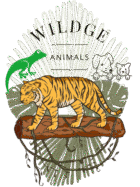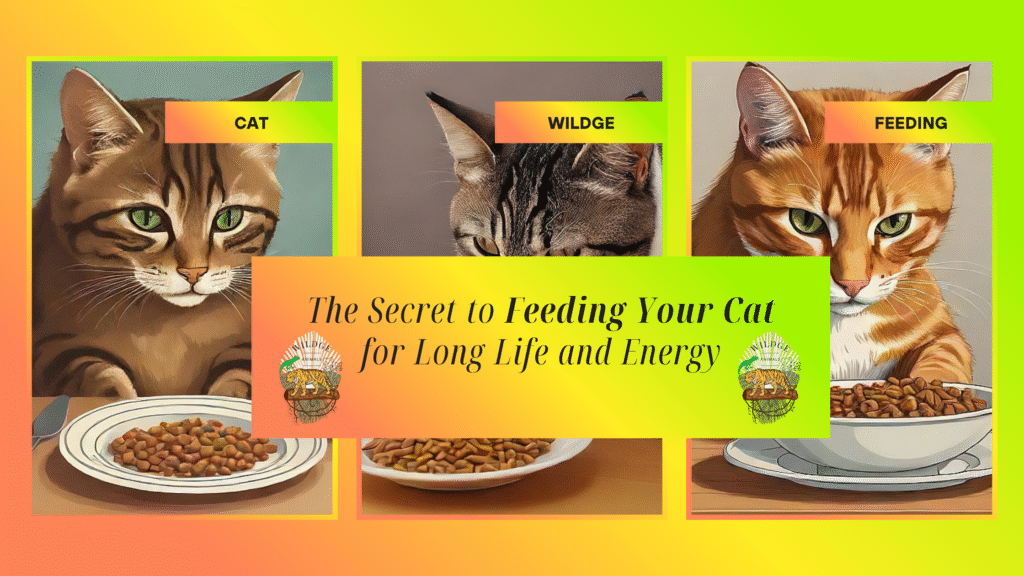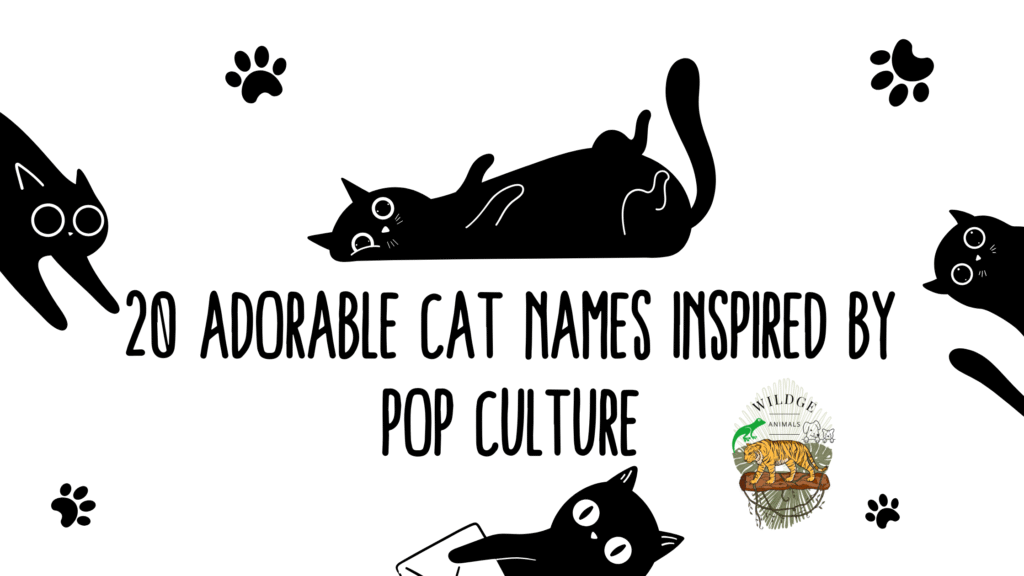Table of Contents
Introduction: Why Feeding Your Cat Properly Is More Important Than You Think
There is no more important thing that you could do when it comes to giving your cat a happy, healthy existence than what you feed them. Although love, playtime, and frequent visits to the vet are important, there is one thing that is perhaps the biggest secret that can extend the life of your cat and make their energy so much more vigorous, and it is how you feed your cat.

Unluckily, the majority of cat owners unwittingly make decisions that may prove to be the cause of obesity, nutritional deficiencies, or even ill health in the long term. There are so many food choices in the market- wet, dry, raw, grain-free, it is no wonder that one is overwhelmed. And it does not have to be complex to know what your cat requires in terms of nutrition.
So in this guide, we are going to take you through all that you need to know about how to feed your cat in order to achieve long life and energy, such as what to eat, how much to eat, and what not to eat, among others. You may have a playful kitten or an old feline, but the hints you can get here are scientifically based tips and recommended by veterinarians.
So, what can smart feeding do to make your cat healthy? Let us look at how it can change this in your cat–starting today!
Feeding Your Cat: What a Balanced Diet Really Looks Like
A good diet needs to feed your cat to support its immune system, a strong body, good digestion, and long-term health. Cats are obligatory carnivores as their biological system is programmed to flourish with animal-based substances.
The Essential Nutrients Every Cat Needs:
- Quality animal protein: Promotes the growth of muscles and energy.
- Taurine: It is an essential amino acid that is exclusive to animal tissue, vital in heart and eye health.
- Moisture: Cats have an insensible sense of thirst and therefore, moisturizing food (wet food) is crucial.
- Healthy fats: GA good source of energy and gives a lustrous coat.
- Vitamins and minerals: that the cats have to create from the unavailability of plant material, specifically, calcium, phosphorus, and vitamin A.
Age Requirements of Nutrition:
- The kittens will require increased calories, protein, and fats to achieve such fast growth.
- Maintenance level calories and balanced nutrition should be used to ensure that the adult cat does not gain weight.
- Older cats are commonly necessitated by the use of low-calorie herbal diets that incorporate nutrients that support joint health and ingredients that are simpler to break down.
Pay attention to these aspects, not only because you are providing the right types of nutrition to your cat, but because you are also making sure that your cat stays healthy in the long perspective.
Wet vs. Dry Food: What’s Best for Long-Term Health?
The overall issue of concern that the majority of cat owners struggle with when it comes to feeding their cats is whether to offer cat food that is wet or the one that is dry, in addition to a combination of both. There are negative and positive sides to both, and the method may slightly change as per the age of the cats, the kind of life they are leading, and their medical history.
Pros and Cons:
- Dry Food (Kibble)
- Advantages: Portable, not expensive, able to mitigate the accumulation of plaque.
- Cons: Dehydration can occur when not accompanied by an adequate amount of water, low moisture level, and usually contains more carbs.
- Canned Wet Food
- Advantages: Good moisture is beneficial to the kidneys and urinary system, and usually more agreeable.
- Cons: Has a shorter shelf life after the package is opened, it is more costly, and not suited to free-feeding.
Hydration and Dental Health:
- Most of the cats that are provided with dry food are very likely to get dehydrated and develop a urinary problem, especially those cats who do not tend to take in a lot of water.
- Dry kibble is beneficial to help clean plaque, but this diet should not be used to replace brushing, and also cleaning by a proper professional.
Finding the Right Balance:
Different vets recommend that you serve wet and dry food to your cat in a mixture such that your cat would obtain the hydration of the wet food, and the convenience of kibble. In order to adjust the mix, be sure to determine the hydration necessities and condition of the body of your cat, and their activity level.
Understanding Cat Food Labels: Avoiding Hidden Harm

First comes feeding your cat, which is followed by making the right choice of product; the fine print may be confusing on the cat food packages. The most critical factor to know is the art of interpreting labels so that you cannot compromise with the low quality of products that will later result in health complications for your cat.
The Way to Read Those Ingredients and Nutrition Labels:
- The ingredients will be classified according to weight. Seek out real meat as the first ingredient rather than by-products or the term animal meal.
- Look in the Guaranteed Analysis section to find the percentages of protein, fat, fiber, and moisture.
- Make sure that the food is AAFCO-approved on the basis of the stage of your cat of life (kitten, adult, or senior).
Red Flags to Avoid:
- The ingredients will be classified according to weight. Seek out real meat as the first ingredient rather than by-products or the term animal meal.
- Look in the Guaranteed Analysis section to find the percentages of protein, fat, fiber, and moisture.
- Make sure that the food is AAFCO-approved on the basis of the stage of your cat’s life (kitten, adult, or senior).
What “Complete and Balanced” Really Means:
This term implies that the food contains at least the bare dietary requirements under the standards of the AAFCO. The term, however, does not warrant high quality; only that the nutrients are contained, it is complete, and balanced. It is best to assess the quality of the ingredients and the brand.
Feeding Your Cat by Life Stage and Lifestyle
There cannot be a one-size-fits-all solution to how we feed our cat. Your cat will have different nutritional requirements based on age, level of activity, and whether it is an indoor or outdoor cat.
Life Stage Feeding:
- Kittens: They have increased caloric and nutritional requirements to grow. Take three to four small meals a day.
- The adults need maintenance diets. It is best to have two meals.
- Diet: Seniors may need customized diets that are low in some calorie intake but oh-so rich in others, like omega-3s or joint care.
Lifestyle Considerations:
- The indoor cats would be less active and would need fewer calories, hence they could get weight-control formulas.
- Outdoor Cats: Use more energy and frequently require food with more calories that is also able to work, particularly during colder weather.
Meal Frequency and Portioning:
- To be stress-free, have a regular feeding schedule instead of overfeeding.
- An appropriate quantity should be fed following the feeding information and advice of your vet.
- Do not feed the dry kibble free-style because they usually gain weight.
The single best thing you can do to ensure long life and enduring energy is to cater to your cat and his or her specific needs.
Check Out: 20 Adorable Cat Names Inspired by Pop Culture.
Common Feeding Mistakes That Can Shorten Your Cat’s Life
Regardless of their intentions, so many cat owners make frequent feeding decisions that may have a counterproductive effect on the total health of their cat. It is life-threatening when you feed your cat wrongly by giving them too much or just enough food, or thewrong type of food, when a cat has serious problems.
Overfeeding and Obesity Risks
One of the most frequent (and avoidable) health issues in cats is obesity. An overload of food, and in particular, dry food, high in calories, causes:
- Joint problems
- Diabetes
- Heart disease
- Shortened lifespan
When there are portion scales, always use them according to the weight of your cat and the activity level, and vary with time.
Inconsistent Feeding Schedules
Cats are habitual. The irregularity of feeding may be a cause of:
- Anxiety and stress
- Overeating
- Digestive issues
Develop the same routine of daily feeding that will aid with healthy metabolism and behavioral support.
Giving Unsafe Human Foods or Toxic Treats
Certain human foods are very hazardous to cats, such as:
- Onion, garlic, and chive
- Chocolates and caffeine
- Alcohol
- Raisins and grapes
- Rough or unleavened yeast or yeasty bread dough
Never give table scraps, and make sure to do your research before giving any new food. Still use vet-approved treats and cat snacks.
Superfoods and Supplements That Support Energy and Longevity
To supplement the basic nutrition, there are certain superfoods and supplements that can be added to your cat to act as a supplementary measure. When intelligently taken, they enhance energy, immunity, and age-related issues.
Cat-Safe Natural Foods Rich in Nutrients
It is good to supplement such superfoods (with vet supervision) in small quantities:
- Omega-3 is found in oily fish (salmon or sardines)
- Fiber and digestive support pumpkin puree (fiber and digestive support)
- Protein and B vitamins in cooked eggs
- Blueberries (antioxidants)
New foods should be given out slowly and one at a time with note that there has to be moderation concerning the type of food being introduced.
When (and When Not) to Use Supplements
The supplements may aid in a situation when your cat has certain deficiencies or health requirements. Examples include:
- Joint and skin Omega-3 capsules
- Digestive problems probiotics
- Senior cat multivitamins
But excessive supplements or human-grade vitamins are harmful. Veterinarian decisions should be consulted first before anything new is attempted.
Vet-Approved Options for Boosting Vitality in Aging Cats
In older cats, treatment can be in the form of:
- Glucosamine and chondroitin joint supplements
- Appetite stimulants in case they are taking less food
- Kidney supportive low-phosphorus diets
The correct supplementation to the diet of your cat can enhance energy and comfort during their golden age.
Feeding Your Cat with Health Issues: What to Know

Companies that keep cats with health conditions usually demand special food that caters to their health conditions. To take care of your cat in illness, it is possible to feed the animal properly and change its living conditions, and improve its health considerably.
Special Diets for Common Conditions
- Diabetes: Research in low-carb, high-protein diets showed stabilization of the level of blood sugar.
- Kidney Disease: Low protein diets, low phosphorus diets relieve the kidneys.
- Food Allergies: Low-ingredient diets, or hydrolyzed protein diets, reduce the inflammation and symptoms.
Veterinarians usually prescribe these special diets, and they must be adhered to.
Importance of Vet Guidance and Checkups
Other symptoms are self-diagnosis or dietary changes without consulting the vet, which would deteriorate the state of your cat. With frequent trips to the vet and blood tests, it is possible to monitor:
- Weight changes
- Organ function
- Nutritional balance
Nutrition is medicine, but when done in the right hands.
How Diet Impacts Chronic Conditions and Recovery
An intelligent diet:
- Progression of the disease at a slow rate
- Strength and hunger
- Minimize symptoms
In most instances, the change of diet minimizes the use of medication or makes it more effective.
Conclusion: The Long-Term Rewards of Feeding Your Cat Right
Feeding your cat properly is along with many things, the best thing you can do to ensure that the health, well being, of your cat is at its best. As we have witnessed in this guide, proper feeding of your cat can result in a prolonged life span, additional energy, and reduced doctor trips in the long run.
Keeping your cat healthy in the long run is also possible by feeding it a balanced and healthy diet that excludes the most common mistakes during feeding, and considering whether the nutrition may change along with your cat due to age and lifestyle. Having some minor modifications on the scale of a switch to a lower-quality food or establishing a pattern of feeding can be of enormous effect.
And some general tips are good, but you should keep in mind: there is no identical cat to another one. It is important to have regular checkups with your vet to determine your cat’s special nutritional requirements, and the unique way that this veterinarian should make guidelines to achieve exactly that.
Proper feeding of your cat is much more than what your cat nibbles at the bowl; it is advice for the development of a much healthier, happier life.
For more info: Click Here.
FAQs of Feeding Your Cat
1. What will be the frequency of feeding my cat?
Two meals a day, one in the morning and one in the evening, usually work well with most of the cats that are at the adult stage. The kittens should eat up to 3-4 smaller portions a day, and the older cats or health issues have more dedicated schedules. It is best to do this as directed by your vet according to age, weight, and activity.
2. Can I combine wet food and dry food?
Yes, wet and dry food can be combined and provide both worlds. Wet food is beneficial in hydration and palatability, whereas dry food is beneficial in convenience and can even provide dental health support. All that is needed is to be careful with the meal size to ensure that they are not overfed and balance out the amount of calories.



